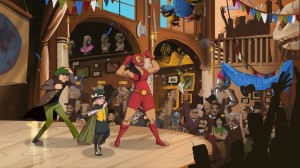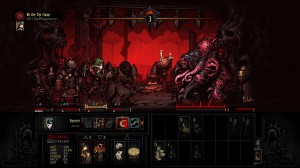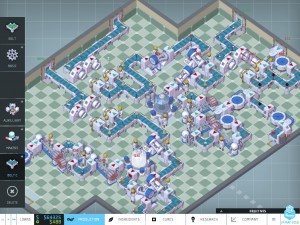With the news surrounding Steam Direct continuing to come out, I wanted to talk a little about selling your game. Being able to sell your game is one of the toughest aspects of game development. With Valve’s plan to crack down on first time development, I wanted to go over some important tips when it comes to selling your game if Steam is not an option.
Marketing:
One misconception is that Steam by itself will handle your marketing for you. Success on Steam can be a self fulfilling prophecy: Your game is successful, so it gets featured on Steam, and continues to do well. However, no game just “magically” becomes a best seller.
You cannot rely on Steam to market your game for you, hence the discoverability issues. We’ve spoken about this topic before, but it’s a major part of being a developer. In today’s world, you must have at minimum: a company site, game site per title and at least one active social media account. We have been seeing strong cases for also having video content either on Twitch or YouTube. Being effective at marketing on social media is a big point, but this is something that I’m still learning about.
I’ve been seeing more developers have video developer logs or live chats to engage their community. Once you have something polished to show people, you must be set up on all fronts to drive discoverability. Marketing when done right is like a snowball that keeps building up mass going down a hill.
If there’s one thing to avoid, it’s releasing your game and no one knowing who you are. To avoid that, we turn to our next point.
PR:
One of the biggest stumbling blocks for new developers is doing PR. I’ve said this before: YOU CANNOT GO DARK WHILE WORKING ON YOUR GAME. If you have an official forum or visit developer specific message boards, keep people updated as to what’s going on. In this case, you shouldn’t be making dozens of messages a day, but it’s good to check back in and show your progress.
Anytime you have a major milestone or progress done are good times to update people. For your regular site or forum, you should get on a regular schedule for posting content and updates on the chance that someone visits.
When your game is taking shape and you have something to show people, start to get in touch with various game sites/YouTubers. Going back to the previous point about your site, you should have a “Press Kit” somewhere.
The press kit will have details about your game, important links, contact info, and ways to acquire a press key when the time comes. If you need help with making a Press Kit, there is a free program developed by Rami Ismail called Dopresskit.

Be on the lookout for new connections to promote your game and make it easy for people to find information about it
Even though you should be doing the contacting on your end, expect to receive emails from people looking at your game.
While it’s easy to jump at the chance to give your game out, another part of PR is doing good PR. There are a lot of scammers out there looking for keys to sell. Do your homework and look at the credentials provided. If there aren’t any, ask.
PR and Marketing are important, but at the end of the day you still need to sell your game.
Setting up a Storefront:
Finally for this post, it’s time to talk alternatives to Steam when selling your game. If the Steam Direct changes that have been announced go through, it’s going to be harder for new developers to get on Steam. If you can’t rely on Steam as a storefront, it’s important to talk alternative options.
Services like the Humble Widget and BMT Micro are longstanding popular options for selling your game. They both provide you with the means of setting up a storefront to handle selling your game through your own site. Talking more about the specifics of both is beyond my knowledge base. If you’re a developer with experience on one or both, feel free to leave your thoughts below.
A new kid on the block would be Itch.io which has been making the rounds lately. However, I don’t have much experience with it and can’t offer firsthand thoughts on it. And of course we have other major sites like GOG, Uplay, Origin etc. If you have to decide what store to use, be sure to read their terms to see which one works the best for you.
With that said, there are people who will only buy your game if it’s on Steam. Unfortunately there’s nothing you can do to win those people over except for the promise of a Steam key when the times comes.
And lastly this should go without saying, but your normal price for your game should be the same everywhere your game is. You don’t want to anger fans who bought your game for more on one site (with exception to a store sale).
Breeding Success:
At the end of the day, popular games just don’t magically show up one day to big profits and sales. It takes a lot of hard work by the developer to market their game. With Steam Direct coming, developers will have to set things up on their own if they want a shot at making it onto Steam.
Just remember, even if you do everything right, that doesn’t guarantee success. All you can do is stack the deck in your favor. Too often, developers will ignore one or more of these points, and with change coming, you cannot ignore them for much longer.
If you enjoyed the post, be sure to check out Patreon Campaign for ways to support Game-Wisdom.




